
©1999-2003. All rights reserved.

|
Trees & Shrubbery
1) - Palm Tree

Cut different sized leaf shapes from thin card.
Cut notches into the edges of the leaves.
Push the leaves onto a pin, starting with the smallest.
Fan them out and curve them slightly, then fix their position by painting the centre of the palm head with PVA.
Paint the leaves a medium green, and then drybrush with lighter, yellower greens. Use a fairly wet drybrush to create lines representing fronds.
Drill a hole into the top of a fir tree twig to create the trunk.
Clip the pin to approx. 1/2" with pliers and glue it into the trunk.
Stick the tree to a base (a small coin or washer is best).
|
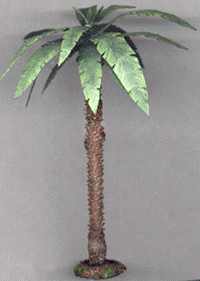
|
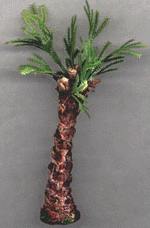
|
2) Tropical Tree I

The trunk of this tree is a pine cone I found that has been stripped to its core by a squirrel.
Unfortunately my attempts to recreate the squirrel's efforts using a fresh pine cone and a pair
of pliers were not at all successful. You'll just have to look around in the woods for the real thing.
The bottom of the cone was filed off to give a flat surface that was then stuck to the base.
Small bits of plastic aquarium plants were stuck in the gaps at the top with UHU. A glue gun would have been better, but I didn't have one at the time.
|
3) Tropical Tree II

The trunk of this tree is a chunk of pine tree twig. The top was hollowed out with a drill and
slots were cut into the edges, into which I stuck leaves from an aquarium plant with UHU.
I also drilled a few holes lower down the trunk and glued leaves into them too.
|
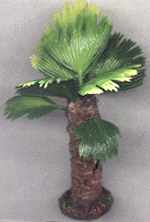
|
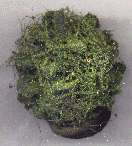
|
4) Small Bush

This bush is based around a small pine cone.
Flatten the bottom of the cone with a file.
Glue the cone to a base.
Paint on a little PVA and wrap round some steel wool to break up the shape of the cone.
Spray the cone black.
Paint on more PVA and cover in flock.
|
5) Wire Tree

This shows a wire tree under construction. Look carefully at some real trees to help you get a realistic shape. Using several thicknesses of wire will also help it appear more realistic.
|
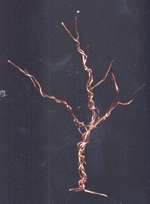
|
Materials and Techniques
BASES

A small coin or washer is used for the base in order to weight the tree down and make it less likely to fall over.
On larger trees a piece of mounting board has been used as the base, with a coin stuck on top of this.
Twigs do not stick well to the base, and it may be worth drilling and pinning them for strength.
FOLIAGE

Aquarium Plants - Plastic plants made for aquariums make good jungle foliage. I got most of these from the 'Pet City' chain. The best glue to stick these with is UHU, and drilling holes to stick them into helps too.
Steel Wool - Spray black, paint with PVA glue and cover with flock to make foliage.
Rubberised Horsehair - This is normally used as a packing material. It can be used in the same way as steel wool, but as it is stiffer, it can be used for larger clumps.
Card Leaves - These are very time consuming, but do give you complete control oer the final appearance of your plant.
TRUNKS & BRANCHES

A variety of pine tree twigs were used as tropical trunks.
Twigs can be used as the framework for whole trees. However, not many plants grow with enough 'twiggy bits' to look right. Some are also very brittle when dry.
One of the best, but most time consuming, ways in which to make trees is to
twist together bits of copper wire and then cover this with putty or filler.
|
